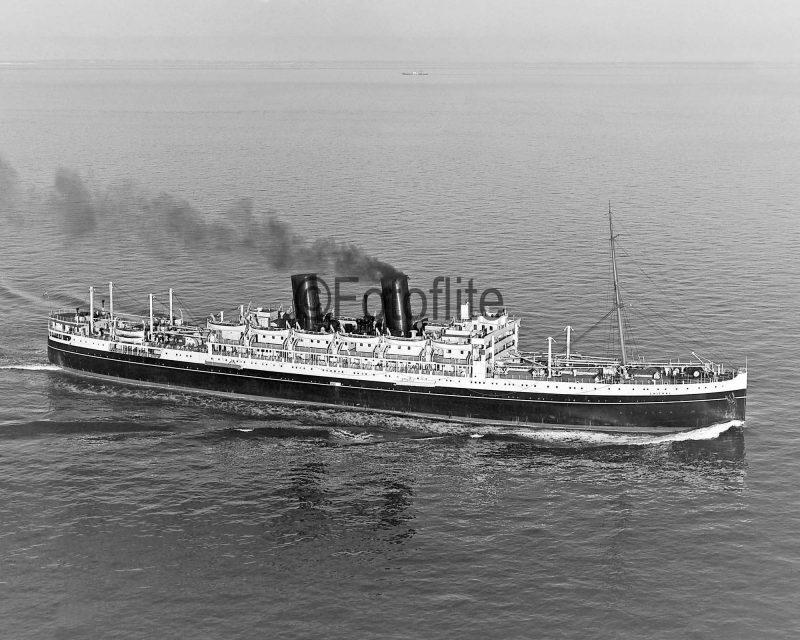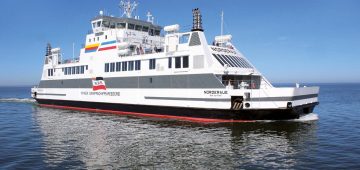Cathay, Chitral, Comorin, Carthage, Corfu and Canton
 German unrestricted submarine warfare against British shipping during World War I had resulted in the loss of 44 fine passenger and cargo-liners of the Peninsular and Oriental Steam Navigation Co. Ltd. In 1919, Chairman Lord Inchcape (born James Mackay in 1852) and his fellow directors of Lord Balfour, Lord Burghclere, Lord Chalmers, Lord Kilbracken, Sir Charles Addis, Sir Duncan Carmichael, Sir Montagu Turner, Sir Walter Lawrence, Hon. Alexander Shaw (son-in-law of Lord Inchcape), and Ernest Cunard were faced with a rebuilding programme of massive proportions. They decided upon a huge new fleet of nineteen deep-sea passenger liners to be ordered in stages for their very important Indian, Far East and Australian services to be completed by 1930, as follows:-
German unrestricted submarine warfare against British shipping during World War I had resulted in the loss of 44 fine passenger and cargo-liners of the Peninsular and Oriental Steam Navigation Co. Ltd. In 1919, Chairman Lord Inchcape (born James Mackay in 1852) and his fellow directors of Lord Balfour, Lord Burghclere, Lord Chalmers, Lord Kilbracken, Sir Charles Addis, Sir Duncan Carmichael, Sir Montagu Turner, Sir Walter Lawrence, Hon. Alexander Shaw (son-in-law of Lord Inchcape), and Ernest Cunard were faced with a rebuilding programme of massive proportions. They decided upon a huge new fleet of nineteen deep-sea passenger liners to be ordered in stages for their very important Indian, Far East and Australian services to be completed by 1930, as follows:-
- A new Indian service flagship in Viceroy of India with 672 passenger berths on the Bombay direct service.
- Five new Branch Line passenger steamers for the Australian service via Suez in Ballarat, Baradine, Bendigo, Barrabool and Balranald with a total of 2,455 berths plus a number of deck passengers.
- Four new ‘M’ class passenger liners for the Australian service via Suez in Moldavia, Mongolia, Mooltan and Maloja with a total of 2,120 passenger berths.
- Four new ‘R’ class passenger liners for the Bombay direct service in Ranpura, Ranchi, Rawalpindi and Rajputana with a total of 2,400 passenger berths.
Five new ‘C’ class intermediate passenger liners for the Australian service via Colombo and the Far East service in Cathay, Chitral, Comorin, Carthage and Corfu with a total of 1,695 passenger berths. A further superior ‘C’ class vessel was completed shortly before the outbreak of World War II as Canton, with ‘A’ deck having a complete run of First Class staterooms to accommodate a total of 480 passengers, making the total for the six ‘C’ class of 2,175 passenger berths.

The provision of a total of 9,400 First Class and Second Class berths in brand new liners, plus 600 deck passengers on the new Branch Line steamers, to give ten thousand new passenger berths was a monumental undertaking even for the British premier passenger liner company, and the six ‘C’ class intermediate liners were to play an important part in the company strategy. Lord Inchcape was able to report on 7th December 1921 at the Annual General Meeting that ‘We are recovering, and I venture to think that we shall shortly be on the upgrade in shipping generally, and if so, this great company will be amongst the leaders in enterprise and in increased prosperity.’

A large proportion of the cargo spaces of the ‘C’ class were insulated for the carriage of refrigerated meat, fish and fruit when used on the Australian route. The first trio of the ‘C’ class were given quadruple expansion steam engines, whereas the second trio, including Canton, were given more powerful steam turbines that gave an ‘all-out’ speed of twenty knots and a service speed of eighteen knots.
The first trio of Cathay, Chitral and Comorin were delivered in 1925 for the Australian service via Suez and Colombo, with Chitral and Comorin transferred to the Far East route in 1931. Cathay also made occasional voyages to the Far East after 1931, although Comorin had returned permanently to the Australian route by the beginning of 1936.
The second trio of Carthage (1931), Corfu (1931) and Canton (1938) were built for the Far East route via Suez and India, and to handle the climatic changes for passengers and cargo of the red heat of the Red Sea and the chilling cold of Northern China. However, the lack of air conditioning in all six members of the ‘C’ class was a major problem. Swimming pools were provided for the delight of passengers in the tropics, and the style of decoration and furnishings in their public rooms was of a much simpler non-heavy type than that which characterised the heavy ornate nature of the larger P. & O. liners. In a phrase, the ‘C’ class were designed to ‘please the passenger, and not the naval architect’.
Subscribe today to read the full article!
Simply click below to subscribe and not only read the full article instantly, but gain unparalleled access to the specialist magazine for shipping enthusiasts.






Comments
Sorry, comments are closed for this item